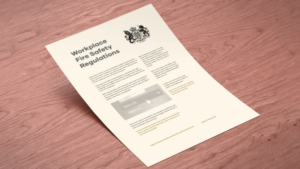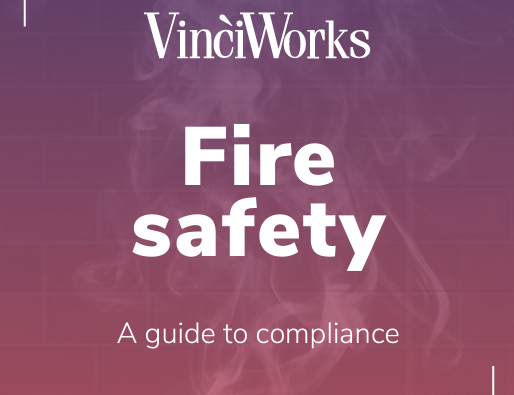UK law specifies what is expected of employers regarding the prevention of fires in the workplace.
Before 2005, there were 80 pieces of legislation dealing with fire safety in the UK. This was simplified and set out under the Regulatory Reform (Fire Safety) Order 2005, covering England and Wales. Similar legislation followed in Scotland (Part 3 of the Fire (Scotland) Act 2005; Fire Safety (Scotland) Regulations 2006) and Northern Ireland (Part 3 of the Fire and Rescue Services (Northern Ireland) Order 2006 and the Fire Safety Regulations (Northern Ireland) 2010).
What Does the Law Say on Fire Safety?
Ensuring compliance with all fire safety legislation is ultimately the job of the “responsible person” in a business. This can mean the owner or landlord, or possibly the person with overall responsibility for the site in question. They are responsible for the safety of all employees, any visitors to the premises and anyone else who may lawfully be on the site. In shared premises, there might be more than one responsible person, and those people should cooperate to make sure their fire safety plans complement one another.
The responsible person must:
– Carry out (or commission a competent person to carry out) a fire risk assessment
– Plan for an emergency
– Inform staff of the fire risks and appropriate measures being taken to minimise them
– Make sure there are suitable fire safety precautions in place such as alarm systems, fire extinguishers and escape routes
– Review the risk assessment regularly to ensure it’s still relevant
For businesses of over five employees, the fire risk assessment must be written down. Although not legally required for smaller companies below this threshold, it’s still a useful document to have so it is recommended anyway.
Companies can hire professional risk assessors if they have any doubts about their competency to properly write their fire risk assessment. In some cases, the local fire service may be able to provide guidance, though they are not able to carry out the risk assessment themselves.
Penalties for flouting fire safety legislation can include unlimited fines and up to two years in prison. After a serious fire in their Oxford Street shop in 2007, New Look were fined £400,000 (and £136,000 in additional costs); although luckily no-one was hurt in the blaze, their fire safety preparations were found to be inadequate, with poor staff training.
In England and Wales, there is a legal requirement for the fire authorities to publicly list the responsible person’s name and the building’s address for any ongoing breach of the fire code.

Fire Safety Training
Existing employees and all new starters should receive good training to ensure they know what to do in the event of a fire, and this needs to be refreshed regularly – preferably annually.
It’s vital that all workers know how to evacuate the building safely in case of an emergency. Regular fire drills are very important for this reason.
Although not a mandatory requirement, many businesses find that specially trained fire wardens (or fire marshals) can help with many of the day to day tasks of making sure fire safety is up to scratch. By checking equipment, organising fire drills and other important jobs, fire wardens can be a very valuable asset to a company.
Emergency Evacuation Plans
Most of the fire safety laws are focused on preventing fires in the workplace. The responsible person, however, must also make sure they have an emergency evacuation plan in place and communicate it to all employees.
The evacuation plan needs to show that there are enough escape routes for everyone, they are clearly marked and fast to get to, emergency lighting and doors are in good working order and there are safe meeting points. It needs to take into account that lifts cannot be used during a fire.
For people with limited mobility (either permanently due to disability or temporarily due to pregnancy or injuries), special care must be taken to make sure they are able to get to safety quickly. This includes drawing up a PEEP (Personal Emergency Evacuation Plan) with their line manager.
Since the Regulatory Reform (Fire Safety) Order 2005 became law, employers have had clear and easy to follow guidelines to make sure their businesses are meeting all their fire safety responsibilities. By regularly checking their risk assessment to ensure it is still fit for purpose, companies can make sure they’re covered – and most importantly, that all staff are aware of how to prevent fires and how to evacuate if one breaks out.


